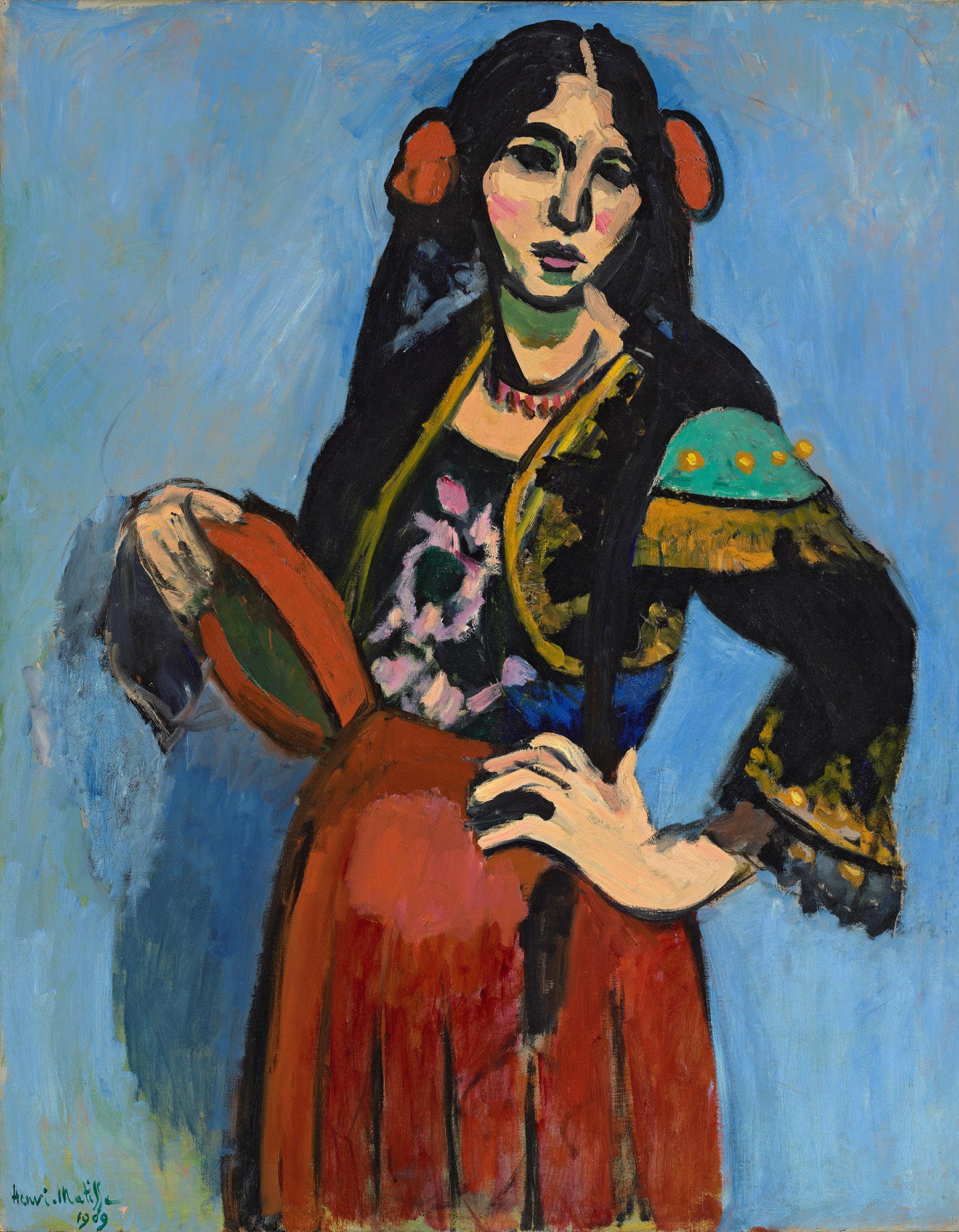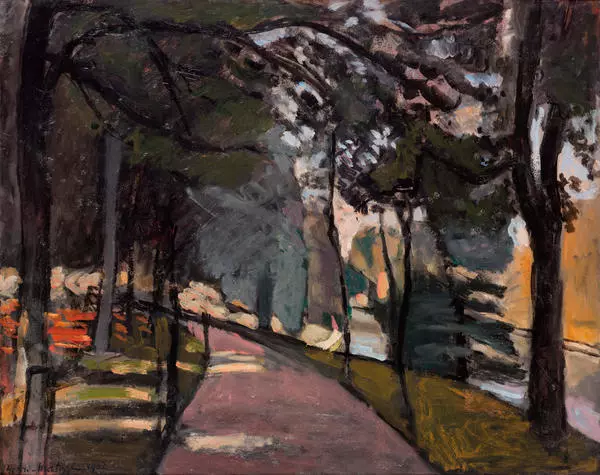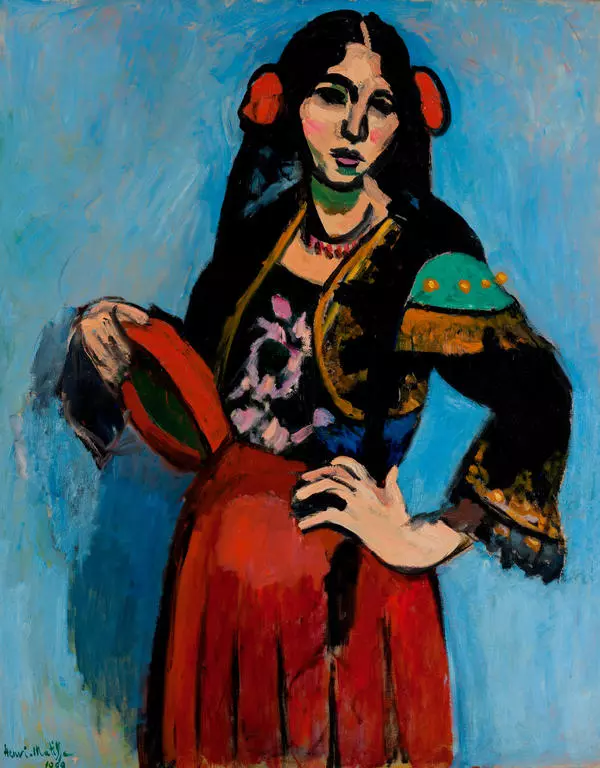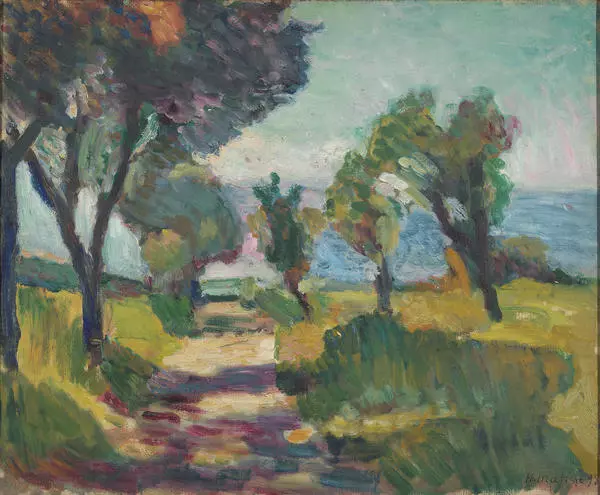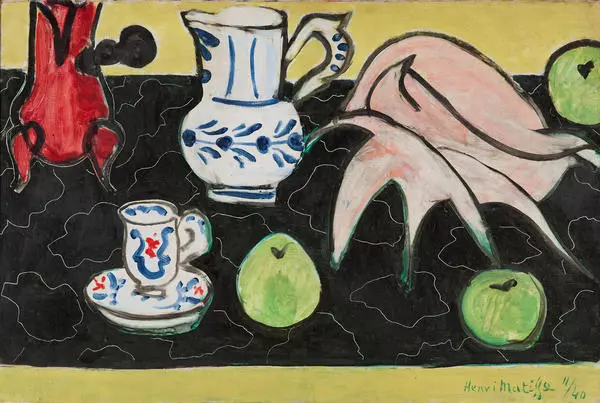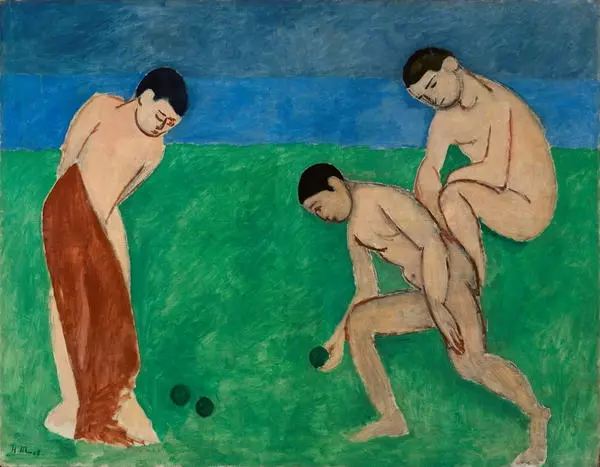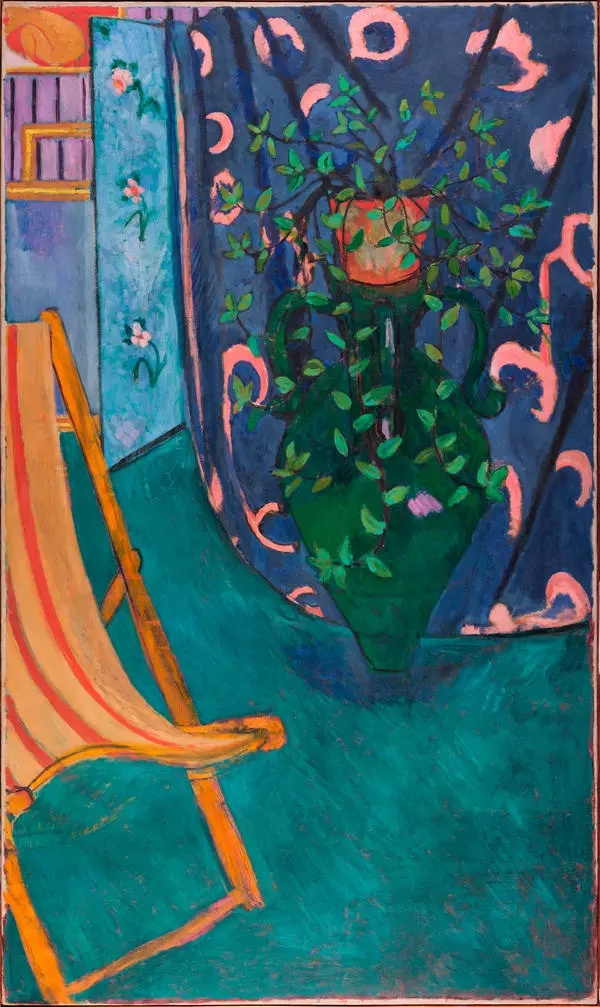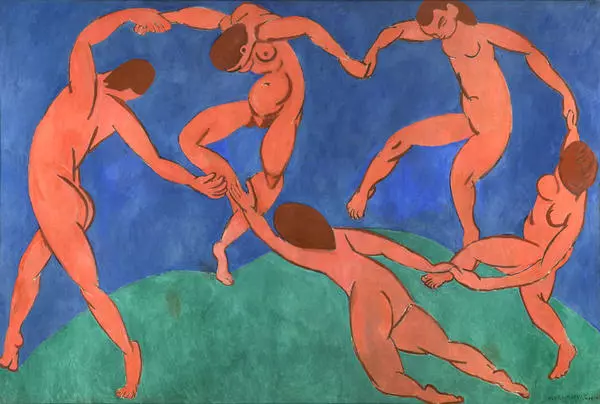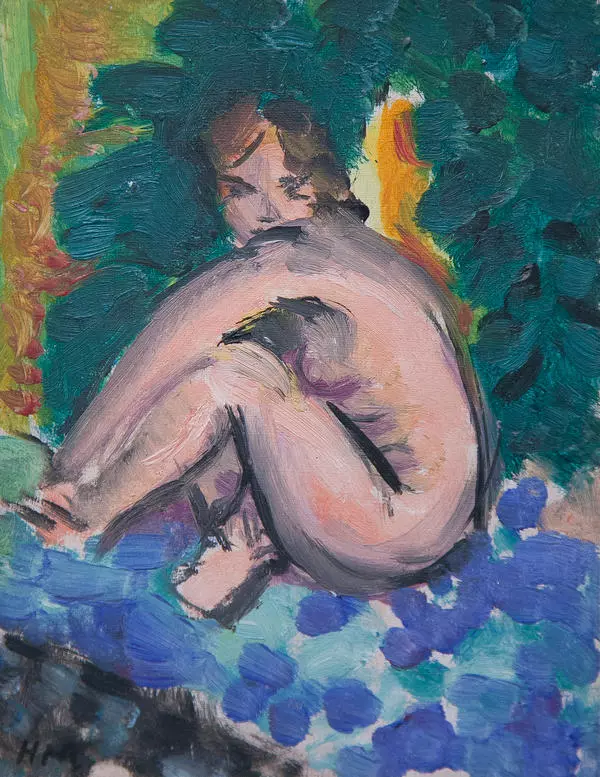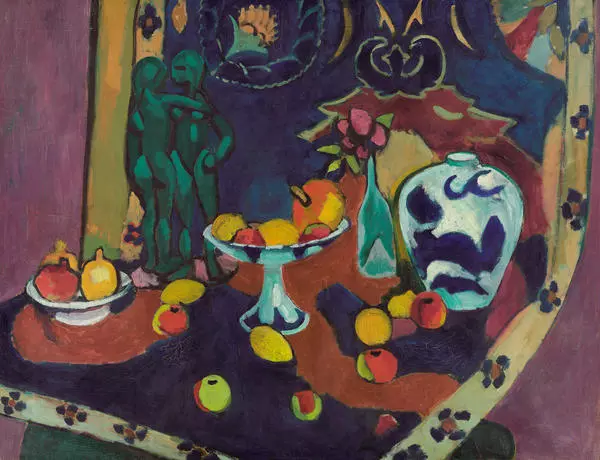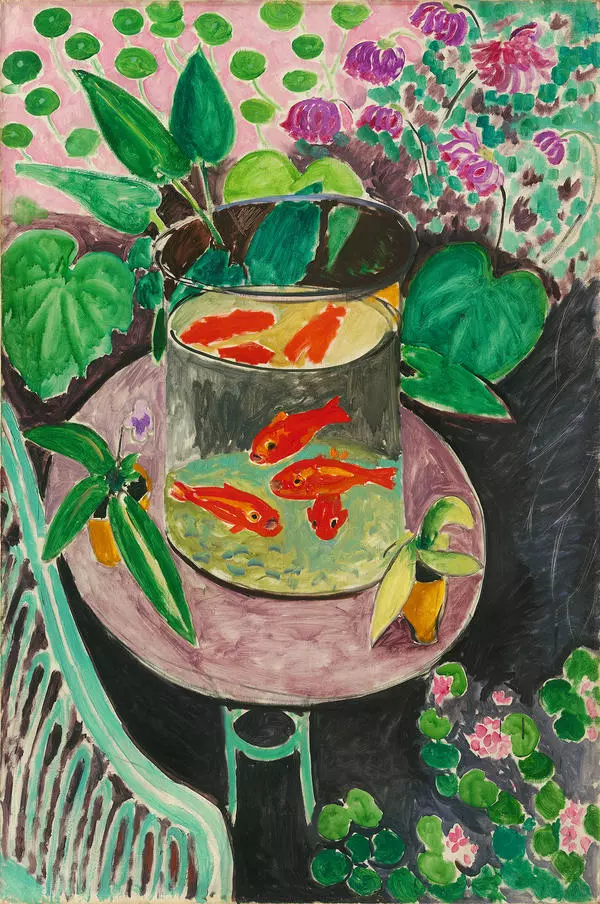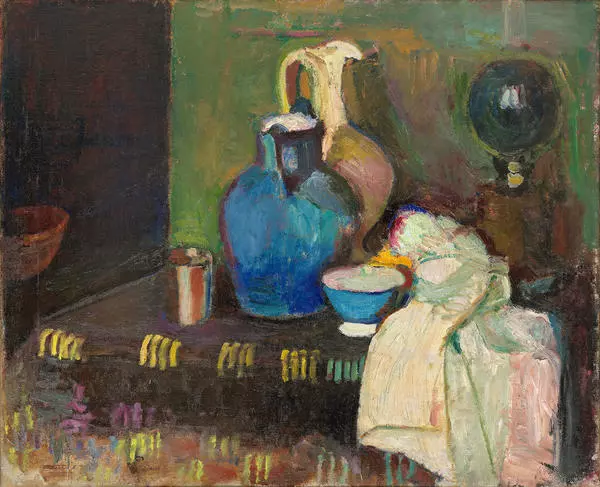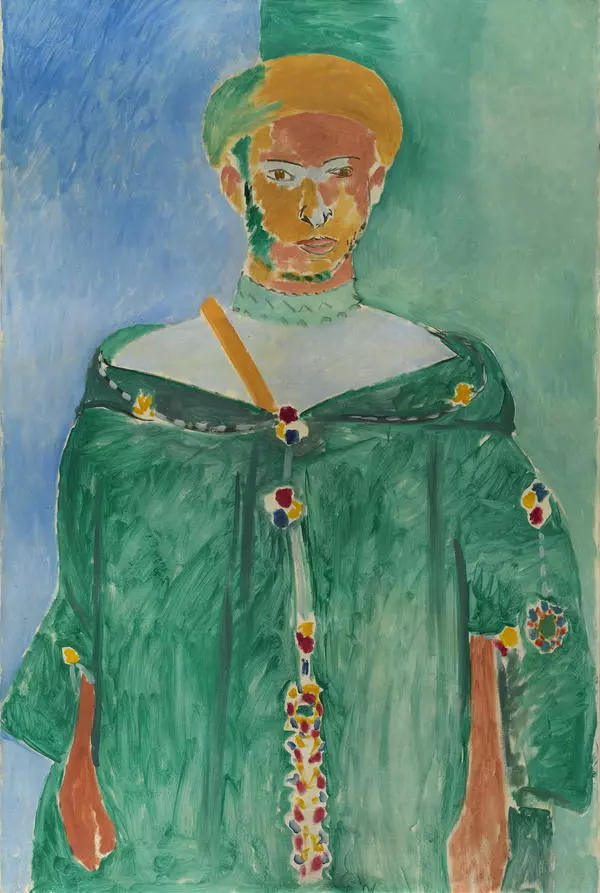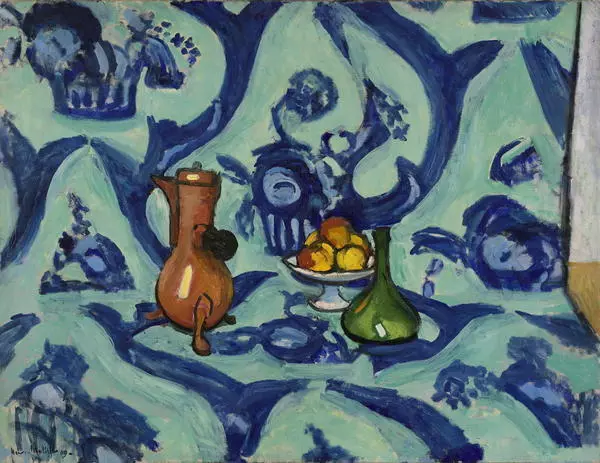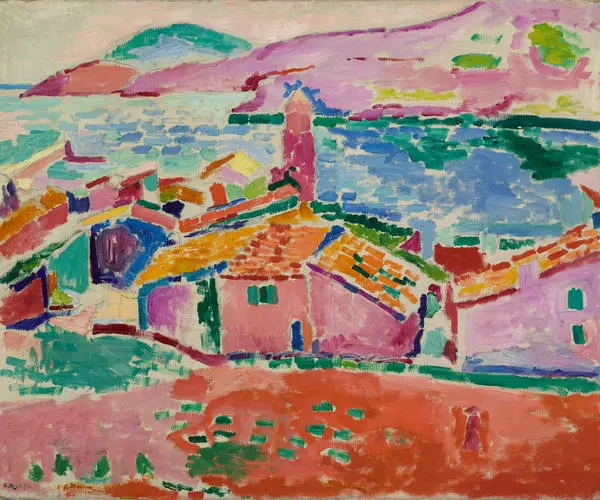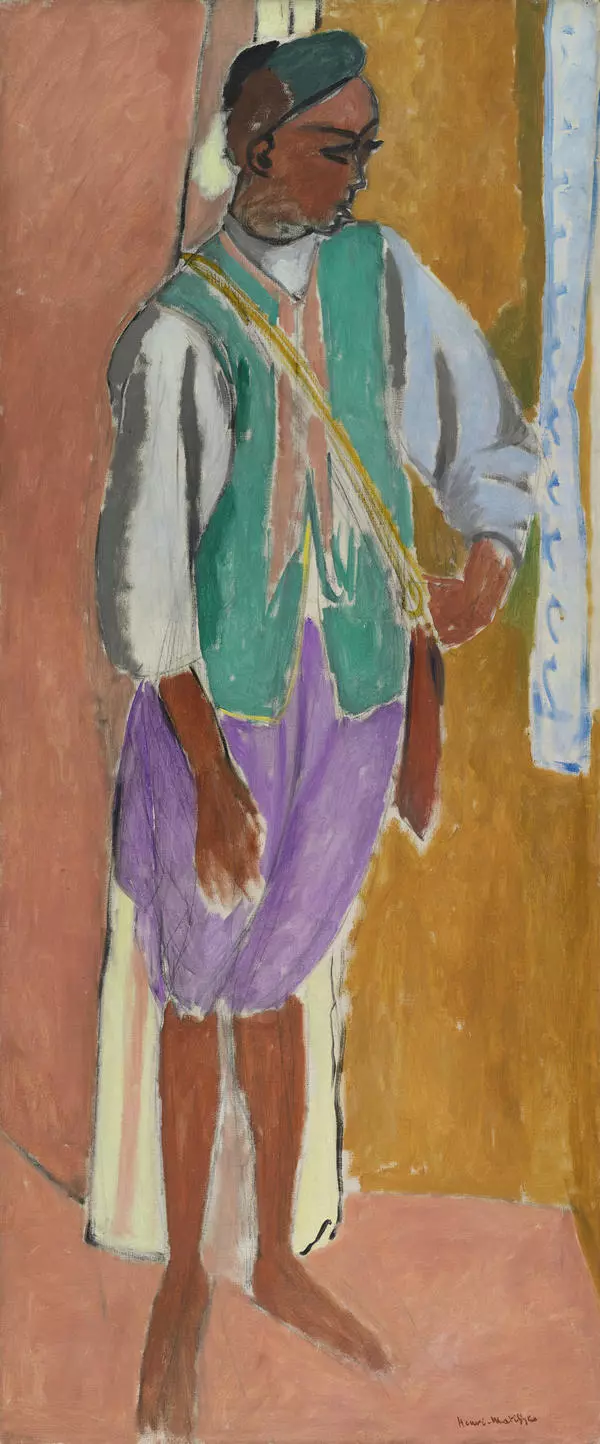In ‘Spanish Woman With a Tambourine’ Henry Matisse made an effort to explore the decorative value in every portrayed object. Matisse was an enthusiastic researcher of Oriental art — not only Japanese xylography, but also Muslim art. He was attracted to models with an Eastern appearance in exuberant traditional outfits. To paint the young Spanish woman, he used a combination of pure bright colors: red for the skirt and flowers in the hair, black for the hair and waistcoat, a number of turquoise spots for the epaulets, and lilac for the quilted blouse. The expressiveness and brightness of the palette is intensified by the radiant blue background. Matisse also adopted a special role for a line, an arabesque, from Oriental art. The arabesque is what gives the painting its ornamental value. The black lines recurring in the oval shape of the tambourine, the tilt of the woman’s head, the bend of her arms, and the outlines of flowers and the skirt produce the effect of a compositional rhythm.
Spanish Woman With a Tambourine
Время создания
1909
Размер
92x73 cm
92х73
92х73
Техника
oil on canvas
Коллекция
Выставка
#1

Henry Matisse
Spanish Woman With a Tambourine
#2
читать дальшескрыть
00:00
00:00
1x
Spanish Woman With a Tambourine
Время создания
1909
Размер
92x73 cm
92х73
92х73
Техника
oil on canvas
Коллекция
Выставка
Открыть в приложении
Поделиться
